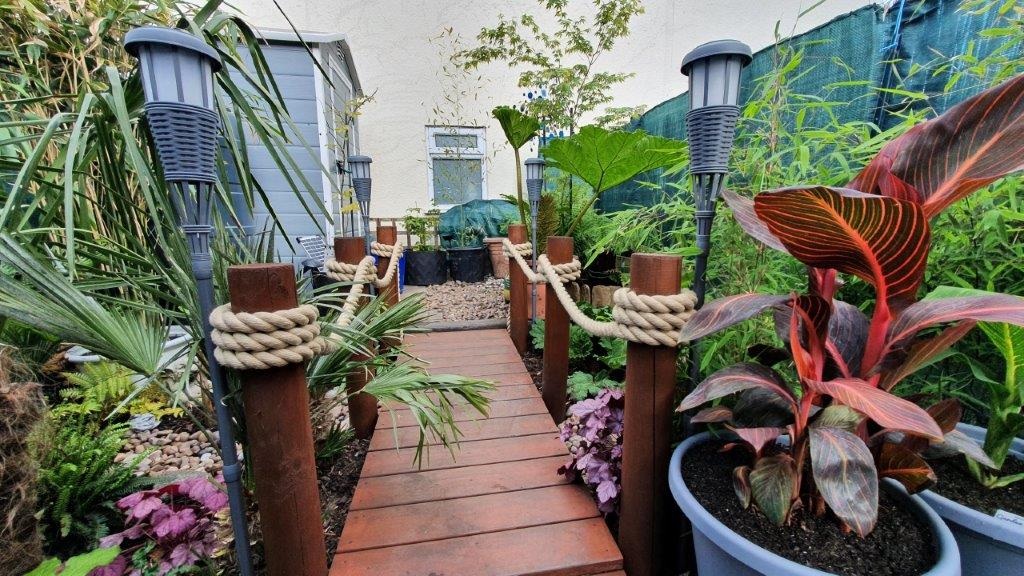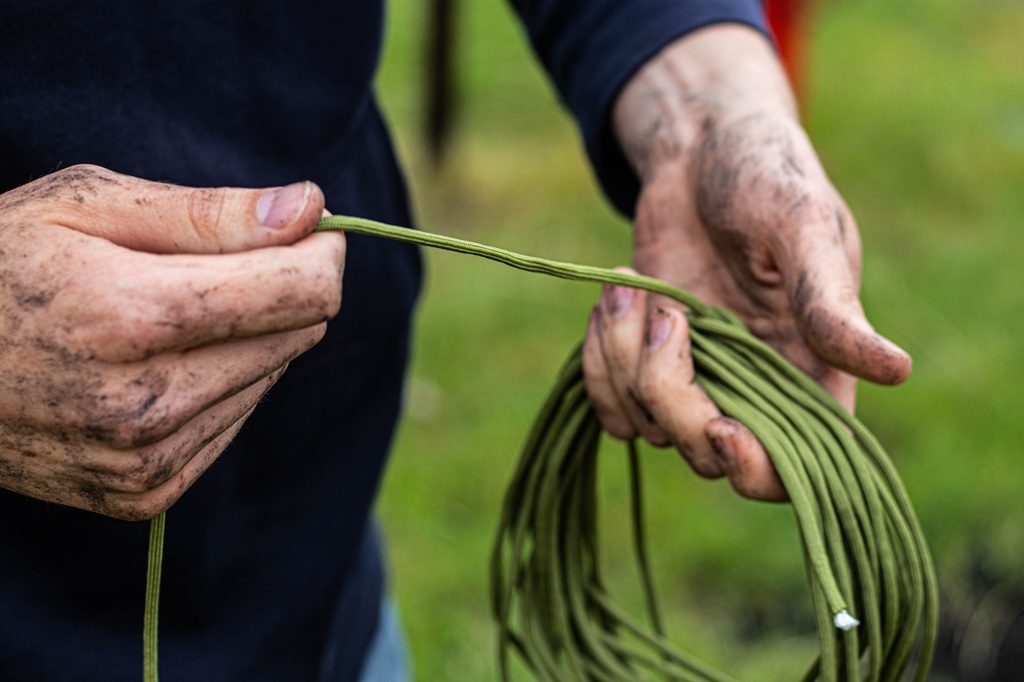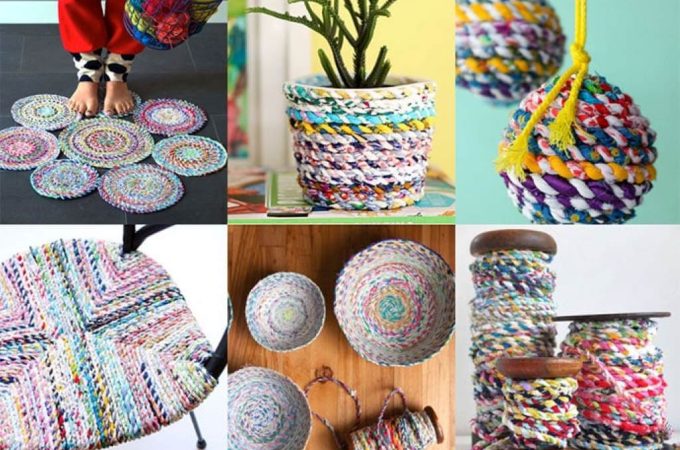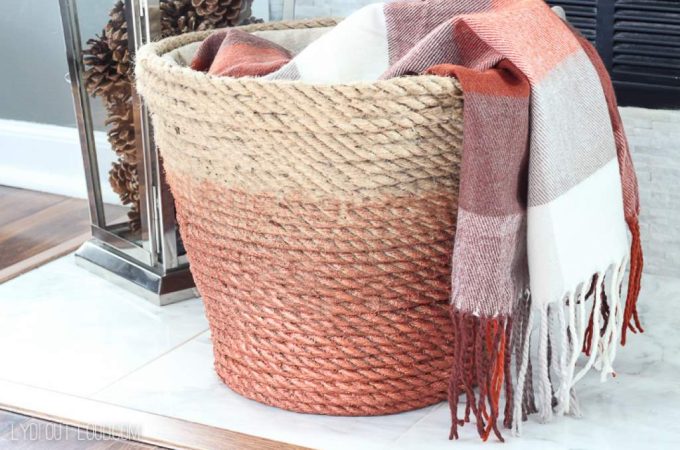
The Ultimate Guide to Rope Uses in Gardening, DIY, and Survival
From the humble string bean to the mighty oak, nature’s bounty often benefits from a little human intervention. And what versatile tool, often overlooked, plays a crucial role in nurturing, building, and even surviving? Rope. More than just a simple twisted fiber, rope is an unsung hero in countless scenarios, offering strength, flexibility, and endless possibilities.
Contents at a Glance
ToggleThis comprehensive guide delves into the multifaceted world of rope, exploring its indispensable uses in gardening, DIY projects, and critical survival situations. Whether you’re a seasoned green thumb, a weekend warrior, or an outdoor enthusiast preparing for the unexpected, understanding the power of rope will elevate your skills and empower you to tackle any challenge.
The Foundation: Understanding Rope Types and Materials
Before we dive into specific applications, let’s lay the groundwork by understanding the diverse world of rope itself. Not all ropes are created equal, and choosing the right type for the job is paramount for safety, effectiveness, and longevity.
Ropes are broadly categorized by their construction and material:
Construction:
- Twisted (Laid) Rope: Composed of multiple strands twisted together in a helical fashion. This is the most common and traditional type, known for its good stretch and ability to hold knots well.
- Braided Rope: Features a core surrounded by a woven sheath. Braided ropes are less prone to kinking, have less stretch, and often feel smoother.
- Solid Braid: A dense, firm braid without a separate core.
- Double Braid: A braided core encased in a braided cover, offering high strength and low stretch.
- Kernmantle: A core (kern) protected by a woven sheath (mantle). This construction is exceptionally strong and often used in climbing and safety applications.
Materials:
- Natural Fibers:
- Manila: Strong, durable, and resistant to sunlight and saltwater. Traditionally used for marine applications and heavy-duty tasks.
- Sisal: Similar to manila but less strong and more abrasive. Often used for agricultural purposes and crafting.
- Cotton: Soft, flexible, and comfortable to handle. Ideal for decorative uses, clotheslines, and light-duty tasks where comfort is key.
- Jute: Economical and biodegradable, often used for crafts, tying, and temporary outdoor applications.
-
Synthetic Fibers:
- Nylon: Extremely strong, elastic, and resistant to abrasion, rot, and mildew. Excellent for shock absorption, towing, and applications where stretch is beneficial.
- Polyester: Strong, low stretch, and highly resistant to UV rays, chemicals, and abrasion. Ideal for rigging, sailing, and applications requiring minimal stretch.
- Polypropylene: Lightweight, floats on water, and resistant to rot, mildew, and many chemicals. Less strong than nylon or polyester but very economical. Suitable for general utility and marine uses where buoyancy is desired.
- Dyneema/Spectra (UHMWPE – Ultra High Molecular Weight Polyethylene): Exceptionally strong (pound for pound stronger than steel), very low stretch, and highly resistant to abrasion and UV degradation. Used in high-performance applications like sailing, climbing, and arborist work.
Choosing the right rope means considering:
- Strength requirements: How much weight or force will the rope need to withstand?
- Environmental conditions: Will the rope be exposed to sunlight, water, chemicals, or extreme temperatures?
- Stretch characteristics: Is shock absorption needed (nylon) or is low stretch preferred (polyester, Dyneema)?
- Handling and knotting: Is a soft, flexible rope preferred, or is stiffness acceptable?
- Budget: Natural fibers are generally more affordable, while high-performance synthetics are more expensive.
Rope in the Garden: Cultivating Growth and Order
The garden, a place of growth and beauty, is also a workspace where rope proves invaluable. From supporting delicate plants to creating organized spaces, rope is a gardener’s silent partner.
-
Plant Support and Trellising:
- Tomato Staking: Use soft cotton or jute twine to gently tie tomato plants to stakes, preventing them from sprawling and improving air circulation.
- Climbing Plants: Provide a sturdy framework for peas, beans, cucumbers, and other vining plants using natural fiber ropes (jute, sisal) or weather-resistant synthetic options like polypropylene. Create trellises with crisscrossing lines to maximize climbing surface.
- Fruit Tree Branch Support: When heavy fruit loads threaten to break branches, use strong nylon or polyester rope to create slings or supports, distributing the weight and preventing damage.
- Espaliering: Train fruit trees or shrubs to grow flat against a wall or fence using a series of horizontal ropes to guide their growth into desired patterns.
-
Garden Layout and Planning:
- Straight Lines and Borders: Use a taut length of rope to mark perfectly straight rows for planting, define garden beds, or outline pathways.
- Circles and Curves: Create perfect circular or curved beds by tying one end of a rope to a central stake and using the other end with a marker to draw the desired shape.
-
Tool Management and Storage:
- Hanging Tools: Create loops or use short lengths of rope to hang garden tools in a shed or garage, keeping them organized and off the floor.
- Bundling Firewood/Branches: Gather and secure bundles of firewood or fallen branches with sturdy rope for easy transport and storage.
-
Temporary Fencing and Protection:
- Deer Deterrent: While not a permanent solution, running lines of rope around vulnerable plants can sometimes deter deer or other animals.
- Protecting New Seedlings: Create temporary barriers around delicate seedlings to prevent accidental trampling.
-
Raised Beds and Planters:
- Securing Liners: If using a fabric liner in a raised bed, use rope to secure the edges to the frame, preventing it from shifting.
- Drainage Layer Separation: In large planters, a layer of rope netting can be used to separate drainage material from potting mix, preventing clogging.
Rope in DIY: Crafting, Repairing, and Building
The world of DIY is practically synonymous with problem-solving, and rope is a fundamental tool for countless projects, both big and small. Its versatility extends from decorative accents to structural aids.
-
Lifting and Moving:
- Furniture Moving: Use strong nylon or polyester ropes to create handles or leverage points for moving heavy furniture, appliances, or awkward objects.
- Hoist Systems: For vertical lifting, especially in workshops or garages, construct simple pulley systems using strong rope and pulleys to lift engines, lumber, or other heavy items safely.
- Securing Loads: When transporting materials on a roof rack or truck bed, use sturdy tie-down ropes with appropriate knots to secure the load and prevent shifting.
-
Crafting and Decoration:
- Rope Baskets and Mats: Coil and stitch natural fiber ropes (cotton, jute, sisal) to create rustic and durable baskets, placemats, or coasters.
- Nautical Decor: Incorporate nautical knots and ropework into home decor, such as lamp wraps, curtain tie-backs, or decorative wall hangings.
- Rope Handrails: For a unique and sturdy aesthetic, use thick natural fiber rope as a handrail along staircases or decks, secured with appropriate fittings.
- Macrame: Create intricate wall hangings, plant hangers, and decorative pieces using various macrame knotting techniques with cotton or jute rope.
-
Repair and Maintenance:
- Temporary Fixes: From securing a broken fence post to temporarily reinforcing a wobbly chair, rope can provide quick and effective temporary repairs.
- Tool Handle Grips: Wrap worn or slippery tool handles with smaller diameter rope or twine for improved grip and comfort.
- Bundling Materials: Organize and bundle lumber, pipes, or other long materials for storage or transport.
-
General Utility:
- Clotheslines: A classic and practical use, cotton or synthetic rope makes for excellent clotheslines.
- Pet Leashes and Collars: Craft custom, durable leashes and collars for your pets using strong braided or kernmantle rope and appropriate hardware.
- Tent Guy Lines: Essential for camping, use reflective or brightly colored rope for tent guy lines to secure your shelter and prevent trips.
Related: Weaving Wonder: A Comprehensive Guide to DIY Plant Hanger Rope
Rope in Survival: Lifeline in the Wilderness
In survival situations, rope transcends its utilitarian role and becomes a lifeline. Its ability to secure, lift, and create provides a critical advantage when resources are scarce and safety is paramount.
-
Shelter Building:
- Tarpaulin/Tarp Shelter: Use rope to secure a tarp between trees or to improvised poles, creating a lean-to, A-frame, or other emergency shelter.
- Debris Hut Framework: Lash together branches and logs with rope to form the basic structure of a debris hut, providing insulation and protection from the elements.
- Hammock Suspension: If you have a hammock, strong rope is essential for suspending it safely between trees.
-
Fire Starting and Management:
- Bow Drill Kit: While advanced, a piece of cordage is a critical component of a bow drill fire-starting kit, providing the friction needed to generate an ember.
- Gathering Firewood: Use rope to create a simple drag or shoulder sling to transport larger quantities of firewood to your campsite.
-
Water Procurement:
- Rainwater Collection: Use rope to suspend a tarp or plastic sheeting to collect rainwater, directing it into a container.
- Hauling Water: If you have a container, rope can be used to lower it into a water source and haul it back up.
-
Signaling and Rescue:
- SOS Signal: Lay out bright-colored rope on the ground in a clear SOS pattern to signal for help from above.
- Throw Line: In water rescue situations, a buoyant rope can be used as a throw line to reach a person in distress.
- Improvised Ladder: In steep terrain, if sturdy anchor points are available, multiple lengths of rope can be tied together to create a temporary, improvised ladder.
-
First Aid and Medical:
- Tourniquet (Last Resort): In extreme bleeding situations, a rope can be used as a tourniquet, but this should only be done as a last resort by trained individuals as it can cause significant harm.
- Splinting: Use smaller diameter rope or twine to secure a splint to an injured limb, immobilizing it.
- Stretcher Construction: With strong branches and sturdy rope, an improvised stretcher can be built to transport an injured person.
-
Food Procurement:
- Snare Traps (Illegal in Many Areas): In a survival situation, rope can be used to construct simple snare traps for small game, though regulations vary by location.
- Fishing Line: While not ideal, thin strands of rope can be separated and used as improvised fishing line.
- Hanging Food: Protect food from animals by using rope to hang it from a tree branch, out of reach.
-
Navigation and General Utility:
- Trail Marking: Leave markers made of rope to indicate your path in unfamiliar territory.
- Securing Gear: Lash gear to your pack or to a makeshift raft for transport.
- Binding and Repair: From repairing a broken tool handle to re-attaching a sole to a shoe, rope can provide critical temporary repairs in the wilderness.
Related: Unleash Your Inner Knot-Tyer: A Comprehensive Guide to Macrame Rope DIY
Knot Know-How: The Key to Rope’s Potential
Knowing how to tie a few essential knots is as important as having the right rope. A well-tied knot ensures security, efficiency, and safety. Here are a few indispensable knots for gardening, DIY, and survival:
- Overhand Knot: The simplest knot, often used as a stopper knot or to prevent fraying.
- Figure-Eight Knot: A more secure stopper knot than the overhand, easier to untie.
- Square Knot (Reef Knot): Used for joining two ropes of the same diameter, but beware, it can slip under certain conditions.
- Bowline: Creates a secure, non-slip loop at the end of a rope, excellent for tying to posts or for rescue.
- Clove Hitch: A quick and easy knot for temporarily securing a rope to a pole or stake.
- Two Half Hitches: A reliable knot for securing a rope to a pole or ring, often used in conjunction with a clove hitch.
- Taut-Line Hitch: An adjustable knot used to create tension in a line, ideal for tent guy lines or securing tarps.
- Trucker’s Hitch: A compound knot that creates a mechanical advantage for tightening lines, perfect for securing heavy loads.
Practice these knots regularly until they become second nature. A well-tied knot can make all the difference in a critical moment.
Rope Care and Maintenance: Extending its Lifespan
To ensure your ropes are always ready for action, proper care and maintenance are crucial:
- Cleaning: Wash dirty ropes with mild soap and water, then rinse thoroughly. Air dry away from direct sunlight or heat.
- Storage: Store ropes coiled or flaked, in a dry, well-ventilated area, away from direct sunlight, chemicals, and extreme temperatures.
- Inspection: Regularly inspect ropes for signs of wear, abrasion, cuts, fraying, or discoloration. Discard or retire any damaged rope, especially if it’s used for safety-critical applications.
- Avoid Overloading: Never exceed the working load limit of a rope.
- Protect from Abrasion: Use chafing gear or protect ropes from sharp edges or abrasive surfaces when under tension.
- UV Degradation: Synthetic ropes are susceptible to UV degradation over time. Store them out of direct sunlight when not in use.
Related: Marine-Grade Shipping Ropes
Conclusion: The Unsung Hero of Versatility
From the delicate tasks of tying up a nascent vine in your garden to the life-saving applications in a wilderness emergency, rope stands as a testament to simple ingenuity and profound versatility. It’s more than just a tool; it’s an extension of our ability to create, secure, and adapt.
By understanding the different types of rope, mastering essential knots, and practicing proper care, you unlock a world of possibilities. So, the next time you reach for that humble coil of fiber, remember its immense potential. In gardening, DIY, and survival, the ultimate guide to rope reveals not just its uses, but its enduring power as a fundamental element of human endeavor. Invest in good quality rope, learn its secrets, and you’ll find yourself empowered for countless challenges and creations.






